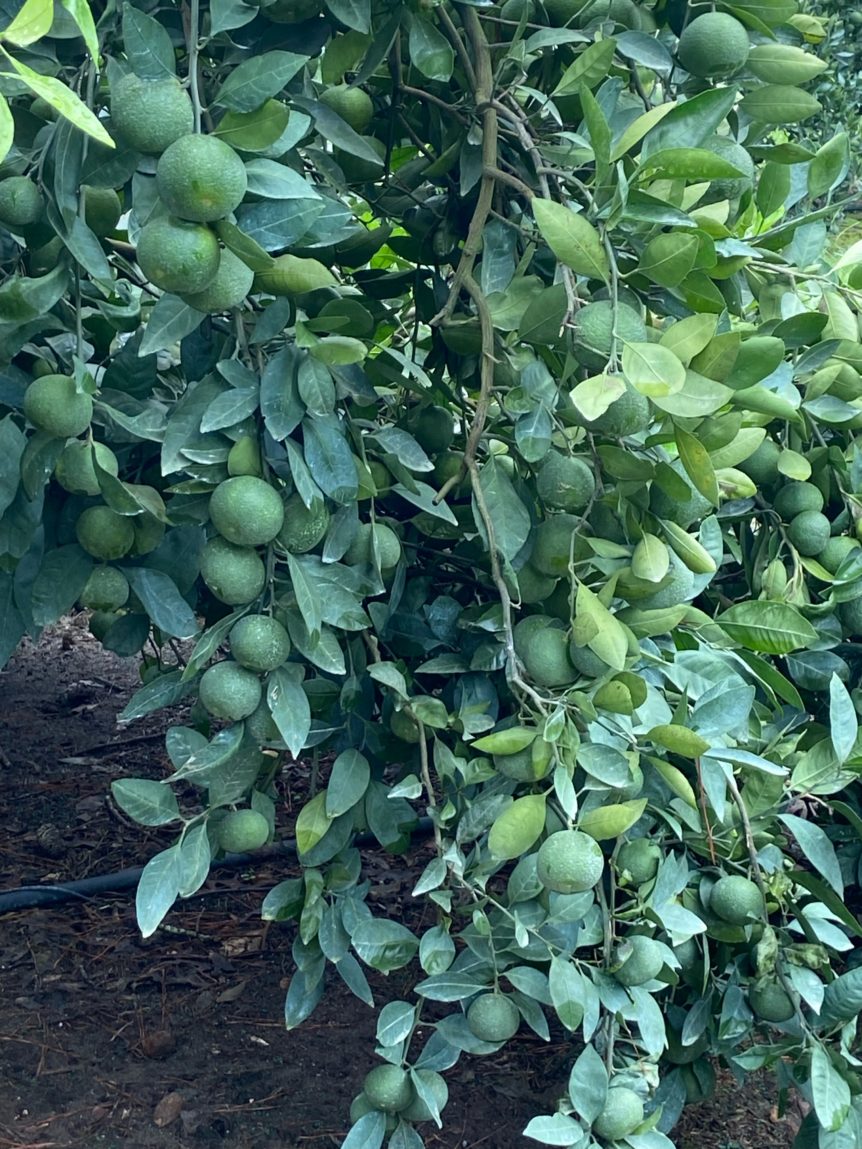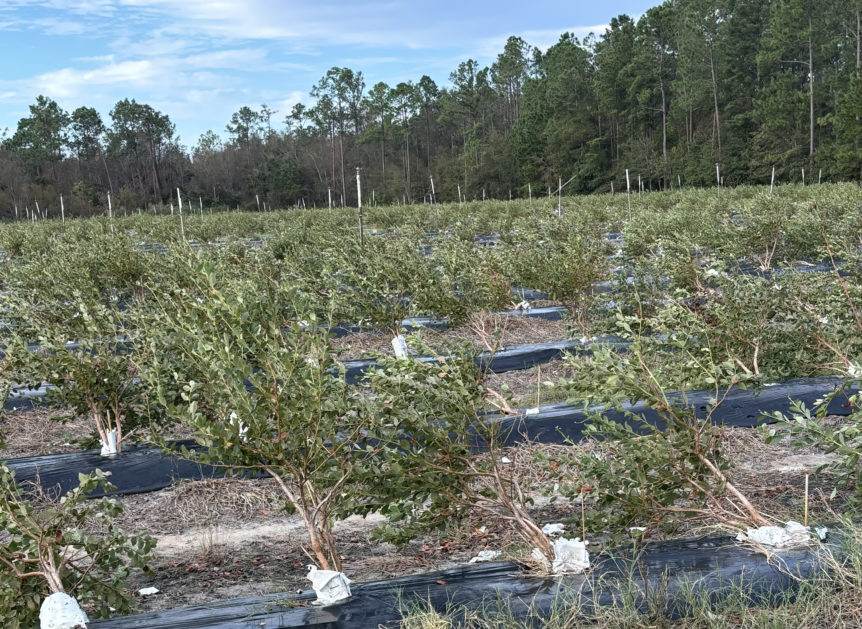By Clint Thompson The Alabama Fruit and Vegetable Growers Association is going bigger with next year’s annual conference and trade show, scheduled for Feb. 5-7, 2025, at the Lodge at Gulf State Park in Gulf Shores, Alabama. Blake Thaxton, executive director of the Alabama Fruit and Vegetable Growers Association (AFVGA), discusses the event which will cater to more vendors this …
Specialty Crop Grower Magazine: Blueberry Varieties in Demand
By Frank Giles The Southeast has become a major production area for blueberries, thanks to strong breeding programs at land grant universities in key states. Here’s a look at several popular, new and under-development varieties from those breeding programs. University of Florida/Breeding Team Lead: Patricio Munoz Sentinel Sentinel is a vigorous, early-season, high-yielding cultivar with no known disease issues, although …
Protect Against Potential Fungus Post-Hurricane
Citrus growers impacted by Hurricane Helene now must decide the best management strategy to protect trees from potential disease issues prior to harvest. Kim Jones, a citrus grower and packer with operations in Monticello, Florida, and Tifton, Georgia, weighed in on what to consider to protect trees. “Fungus is the biggest risk at this point,” said Jones. “The sunshine is …
Florida Ag Sector Asked to Share Impacts of Hurricane Helene
The Florida agricultural sector has been asked to share the adverse impacts of Hurricane Helene last week. Producers can complete an Economic Impact Analysis Program survey, or they can also report information to their local University of Florida Institute of Food and Agricultural Sciences (UF/IFAS) Extension county offices by calling or visiting in person. Agents will be available to assist. …
Two New Peach Cultivars Released
Peach producers now have two new cultivars to consider as part of their farming operations. The U.S. Department of Agriculture (USDA) Agricultural Research Service (ARS) stone fruit program in Byron, Georgia announced it has released two new early season peach cultivars named ‘May Joy’ and ‘Cardinal Joy.’ May Joy requires at least 650 chill hours and produces yellow-fleshed, clingstone fruit …
Specialty Crop Grower Magazine: Protecting Blueberry Pollinators
By Frank Giles Among the critical elements in blueberry production are pollination and crop protection materials. Managing how those two interact is important to ensure pollinators like honey bees are protected. Recently, Rachel Mallinger, a University of Florida Institute of Food and Agricultural Sciences (UF/IFAS) assistant professor of pollinator ecology and conservation, published a paper on managing pesticide applications during …
USDA Invests $1.7 Billion to Support Farmers, Deliver Nutrition Assistance
WASHINGTON – The U.S. Department of Agriculture (USDA) announced this week an investment of $1.7 billion for purchase of locally and regionally produced foods and domestically produced foods for emergency food assistance. These investments, made possible by the Commodity Credit Corporation (CCC), will help American producers by ensuring they have the certainty of access to local and regional markets as …
Hurricane Helene Impact: Clemson Extension Agents Provide Crop Updates
Weekly Field Update Clemson Extension agents provide updates in The South Carolina Grower this week about the status of various crops being produced throughout the state. Hurricane Helene cast tropical storm forced winds over most of South Carolina Friday as she tore through Florida and Georgia. The western part of the state took the brunt of the damage and large …
More to Come? Tropic Season Still a Concern Following Hurricane Helene
By Clint Thompson Hurricane Helene’s trek through the Southeast last week serves as a reminder to specialty crop producers that the tropics remain very active. It is expected to stay that way for at least another month or so, says Pam Knox, University of Georgia (UGA) Extension agricultural climatologist. “It’s a sign that the tropical season is not over. We …
GFVGA Conveys Farm Bill Importance to Legislative Leaders During Recent Meeting
By Clint Thompson A recent meeting with members of Georgia’s legislative delegation allowed the Georgia Fruit and Vegetable Growers Association an opportunity to convey its continued insistence that a farm bill be passed sooner rather than later. Chris Butts, executive director of the Georgia Fruit and Vegetable Growers Association (GFVGA), discussed the meeting’s importance and why growers need a farm …


















